Steph Post's Blog, page 23
March 15, 2017
Writer's Read Recommendation
So many thanks to David Joy for recommending Lightwood in his featured column on Writers Read (and many thanks as well to Marshal Zeringue for hosting him). Here's a snippet:
"She reminds me of a cross between Ace Atkins and Megan Abbott, all that to say: read this novel, read the one that came before, and keep your eyes peeled for what’s coming next."

Also, if you haven't yet, be sure to check out David Joy's debut novel Where All Light Tends To Go and it's follow-up, just released, The Weight Of This World . Cheers!
"She reminds me of a cross between Ace Atkins and Megan Abbott, all that to say: read this novel, read the one that came before, and keep your eyes peeled for what’s coming next."

Also, if you haven't yet, be sure to check out David Joy's debut novel Where All Light Tends To Go and it's follow-up, just released, The Weight Of This World . Cheers!
Published on March 15, 2017 08:09
March 14, 2017
This Book Will Change Your Life
So many thanks to Ben Tanzer and his fantastic blog "This Blog Will Change Your Life" for a killer, thoughtful review of Lightwood. Here's a peek:
"...Always pushing and churning all at once, everyone filled with conflict, loyalty or rage, or all of it all at once, because that's what crime novels are, the push and pull of doing the right thing, while constantly trying to define what the right thing is..."
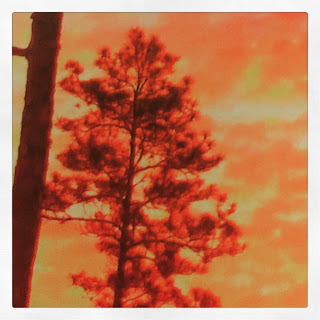
"...Always pushing and churning all at once, everyone filled with conflict, loyalty or rage, or all of it all at once, because that's what crime novels are, the push and pull of doing the right thing, while constantly trying to define what the right thing is..."

Published on March 14, 2017 08:02
March 8, 2017
Shouting Out Nine Badass Women Writers
As today is International Women's Day, I thought it was the prefect time to highlight some of my favorite female authors. These ladies are as badass as they come and if you're not yet familiar with them and their work, that needs to change...
 Beth Gilstrapauthor of No Man's Wild Laura
Beth Gilstrapauthor of No Man's Wild Laura
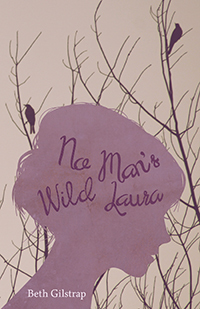
-
 Natalie Harnettauthor of
The Hollow Ground
Natalie Harnettauthor of
The Hollow Ground
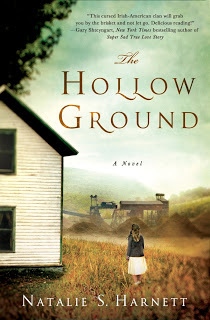
-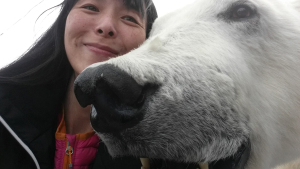 Berit Ellingsenauthor of
Vessel and Solsvart
Berit Ellingsenauthor of
Vessel and Solsvart

-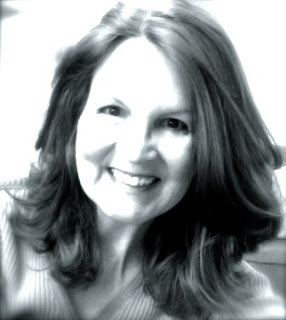 Kathy Fishauthor of Rift
Kathy Fishauthor of Rift
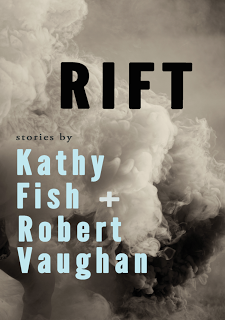 -
-
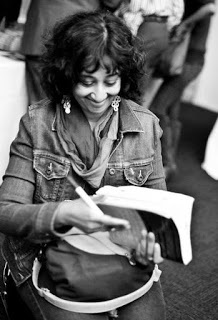 Hasanthika Sirisenaauthor of
The Other One
Hasanthika Sirisenaauthor of
The Other One
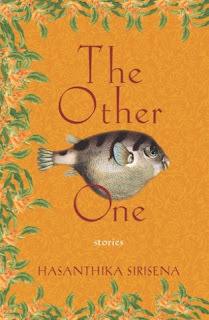 -
[image error]
Mira Jacobauthor of The Sleepwalker's Guide to Dancing
-
[image error]
Mira Jacobauthor of The Sleepwalker's Guide to Dancing
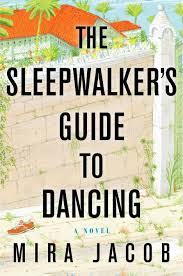
-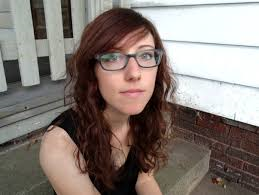 Carmiel Banaskyauthor of
The Suicide of Claire Bishop
Carmiel Banaskyauthor of
The Suicide of Claire Bishop
 -
-
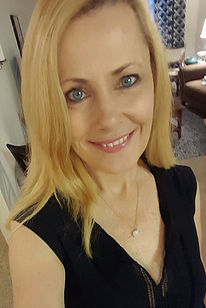 Sheryl Monksauthor of
Monsters in Appalachia
Sheryl Monksauthor of
Monsters in Appalachia
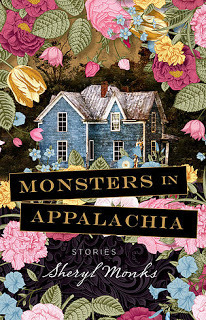 -
-
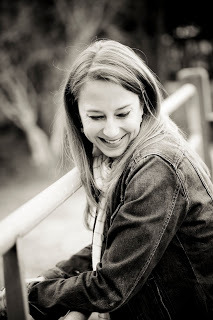 Leah Rhyneauthor of
Heartless
Leah Rhyneauthor of
Heartless
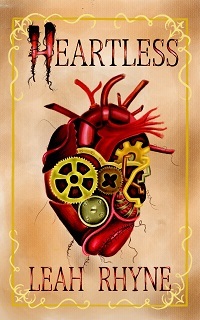 Have some badass female authors you think deserve some recognition? Feel free to add them in the comments. The more, the better!
Have some badass female authors you think deserve some recognition? Feel free to add them in the comments. The more, the better!
 Beth Gilstrapauthor of No Man's Wild Laura
Beth Gilstrapauthor of No Man's Wild Laura

-
 Natalie Harnettauthor of
The Hollow Ground
Natalie Harnettauthor of
The Hollow Ground

-
 Berit Ellingsenauthor of
Vessel and Solsvart
Berit Ellingsenauthor of
Vessel and Solsvart

-
 Kathy Fishauthor of Rift
Kathy Fishauthor of Rift
 -
-
 Hasanthika Sirisenaauthor of
The Other One
Hasanthika Sirisenaauthor of
The Other One
 -
[image error]
Mira Jacobauthor of The Sleepwalker's Guide to Dancing
-
[image error]
Mira Jacobauthor of The Sleepwalker's Guide to Dancing

-
 Carmiel Banaskyauthor of
The Suicide of Claire Bishop
Carmiel Banaskyauthor of
The Suicide of Claire Bishop
 -
-
 Sheryl Monksauthor of
Monsters in Appalachia
Sheryl Monksauthor of
Monsters in Appalachia
 -
-
 Leah Rhyneauthor of
Heartless
Leah Rhyneauthor of
Heartless
 Have some badass female authors you think deserve some recognition? Feel free to add them in the comments. The more, the better!
Have some badass female authors you think deserve some recognition? Feel free to add them in the comments. The more, the better!
Published on March 08, 2017 12:30
Andrew Hilleman Interview at LitReactor
Just in case you missed it, I've got an interview up over at LitReactor.... I'm talking with debut author Andrew Hilleman, author of the brilliant World, Chase Me Down about history, memory and telling a true story. Take a look!

"The Tale Must Be Greater Than The Truth"

"The Tale Must Be Greater Than The Truth"
Published on March 08, 2017 05:16
March 1, 2017
Mercury's in Retrograde
"Mercury's in Retrograde or Quit Blaming a Fucking Planet When You Can't Get Your Shit Together" is actually one of my favorite short (and I mean, short) stories. I wrote this piece in a quick shot and I've always loved it. Now, you can not only read it, but listen to me read it as the story is part of Lit-Tapes from Underpass Review. Take a second, have a listen, and be sure to check out the other two stories comprising Vol. 1 of the enterprise. Here's to Mercury....


Published on March 01, 2017 14:46
Of Nature and Myths: Berit Ellingsen and Vessel and Solsvart
Today I'm thrilled to bring you an interview with one of my favorite authors: Berit Ellingsen. If you know Berit, then you know that her work is gorgeously weird, a crystalline web work gracing the page. She wowed me with the stark grace of last year's Not Dark Yet, but her latest literary offering, the story collection Vessel and Solsvart, spins away from the minimalist style and instead presents four stories which are complex, lush and primordial. You can read my full review of Vessel and Solvart over at the Small Press Book Review, but for now I'm talking to Berit about constellations, myths and Baroque art. Read on...

Steph Post: As you already know, I loved your collection Vessel and Solsvart. I'm going to jump right in, though, with my most burning question: what's up with cover? It's gorgeous and even if I weren't already a fan of your writing, I would immediately be drawn to this book. Is it a constellation? A mathematical equation? And how does In the Region of Bellatrix relate to the stories within or the collection as a whole?
Berit Ellingsen: I'm so glad to hear you like the collection and the cover. And thank you for reading and reviewing it.
The cover is an artwork called In the Region of Bellatrix by Eugene Newmann and is a star map of constellations. The artwork was part of an exhibition called The Raft Project, which featured a raft with human figures. In the Region of Bellatrix was a star map meant for the raft's navigation and was displayed on the wall behind the human figures. The book's designer, Brendan Connell, and Snuggly Books thought the cover fit the collection because several of the stories feature stars and other astronomical phenomena.
SP: The opening and title story, "Vessel and Solsvart" clearly has mythological roots. Is this story based on any one tale in particular?
BE: With the story "Vessel and Solsvart" I tried to imagine a new mythology, a mythology after our time, after the age of humankind, what the world might look like in that sort of future, and how the world might have reacted to the age of humankind and what took place in it. I also envisioned a world where the kinds of animals and plants we find in dark and moist places, such as moss and centipedes, and processes of decay, had taken over the planet because the sun had dimmed.
The structure with the repetition of four is common in Norwegian folk tales, but I didn't have any particular folk tale in mind when I wrote the story. Actually, the nearest direct inspiration was the music video for "Pyramid Song" by Radiohead. In this animated video a human figure dives into the ocean and finds an entire world down there, a suburban neighborhood, and a home where the figure settles in at the end. I thought of that video when I wrote the scene where Vessel dives down to the City of Reeds and Solsvart imagines what he might find there.
But the other cities in the story have no direct inspiration like that. They are imaginings of the essences of human cities and human life, such as the City of Stone and Tar.
SP: One of the first notes I wrote down in reading Vessel and Solvart is "attention to nature- would expect nothing less." The natural world, and in particular the eroding of the natural world, also featured heavily in your novel Not Dark Yet. I know that climate change is something you write passionately about in other arenas as well. Why is this issue so important to you and so central to your work?

BE: The natural world is very important to me because without the natural world the human world and humans can't exist. In our everyday lives we don't notice this much, except for those who work in agriculture, with livestock or with hunting in some way. But we are nevertheless all dependent on plants and animals for food, water for drinking, and an environment that is stable. When the natural environment is ruined or made less habitable, that will make life difficult also for human beings in urban environments.
The reason why the natural world is so central in my writing may also be that I live in a part of the world where almost all activities are heavily dependent on the weather, because the weather can turn from comfortable to deadly at any time of the year. Thus, everyone is aware of the weather and dresses for it. I also have a background as a biologist and work with space science and appreciate the natural world, the non-human living beings, and the Earth's great systems both academically and personally.
As I often like to say: The Earth's true riches are not oil, gas, rare metals or precious gems, but its great biodiversity and multitude of life forms. There are hydrocarbons and metals on other planets but so far, Earth is the only planet where we know there is life. And that makes not caring about or protecting that life and biological wealth so much worse in my eyes.
SP: All of the stories in Vessel and Solsvart have a dream-like quality to them, even though they referencing very earthy, physical elements- swamps, bones, snakes, etc. When you write, do you see your stories clearly, or is there a haze or a gauze over everything that you work through? I guess what I'm getting at is that, so much of your storytelling style is about mystery. I'm wondering if the mystery is there for you as well when you write.
BE: Often, the places and characters are mysterious to me too and slowly unfold as I write. I love exploring them and discovering new sides to them.
Inspiration is a mystery to me as well. Or rather, a bit of a black box. I call myself the first reader of my stories because I rarely plan them and tend to just write what comes into my mind then and there. That means I often have to do a lot of editing of both plot and language to turn it into a story with a structure that will satisfy other readers.
But I don't know where the ideas come from, other than inspirational sources here and there. Often when I re-read my own stories I wonder "where did that come from?".
Some of my stories are based on dreams, so that might give them the dreamlike quality. "Apotheosis," the last story in the collection, is one such example. It was based on a very strange nightmare I had and I thought it would make an interesting flash story about life, immortality, and eternal youth, which is so desired in our culture.
SP: Another theme I noticed flowing through this collection, is that of the attention to contrasts. Life and Death, Darkness and Light, Hope and Despair, Beauty and Horror. How do opposite elements work to tell a story? And were these contrasts something you consciously set out to explore or did they creep into your work on their own?
BE: I didn't consciously intend to write stories with such contrasts. But I think the kind of stories I like best myself are ones that have contrasting emotions and themes and go from high to low to light to darkness, and where the characters have contrasting sides to their personalities which encompass all of that. And in life you rarely get light without darkness, joy without sorrow, etc., and often the two can exist simultaneously, and a situation or place can be both beautiful and horrible.
I admire classical still lifes a lot, as well as the Dutch, Flemish, and Italian masters of European painting. "Summer Dusk, Winter Moon" is partly inspired by such art, as well as the fairy tales of HC Andersen, which are more romantic and softer than the Norwegian folk tales. I love the classical chiaroscuro painting technique of sharp highlights and dark backgrounds, such as in Rembrandt's or Caravaggio's work, so it's probably no coincidence contrasts play a role in my stories.
Even though artworks from the Baroque era may seem dated today, I think their subjects and portrayal of human life show that these artists knew everything about existence that we know in modern times, with the exception of the technology of course.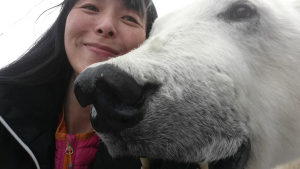 So, if you haven't been introduced to Berit Ellingsen before, I hope you have now.
Vessel and Solsvart
hits shelves on March 6th- be sure to pick up a copy- and also check out Berit's novel Not Dark Yet as well as her many other stories. Happy Reading!
So, if you haven't been introduced to Berit Ellingsen before, I hope you have now.
Vessel and Solsvart
hits shelves on March 6th- be sure to pick up a copy- and also check out Berit's novel Not Dark Yet as well as her many other stories. Happy Reading!

Steph Post: As you already know, I loved your collection Vessel and Solsvart. I'm going to jump right in, though, with my most burning question: what's up with cover? It's gorgeous and even if I weren't already a fan of your writing, I would immediately be drawn to this book. Is it a constellation? A mathematical equation? And how does In the Region of Bellatrix relate to the stories within or the collection as a whole?
Berit Ellingsen: I'm so glad to hear you like the collection and the cover. And thank you for reading and reviewing it.
The cover is an artwork called In the Region of Bellatrix by Eugene Newmann and is a star map of constellations. The artwork was part of an exhibition called The Raft Project, which featured a raft with human figures. In the Region of Bellatrix was a star map meant for the raft's navigation and was displayed on the wall behind the human figures. The book's designer, Brendan Connell, and Snuggly Books thought the cover fit the collection because several of the stories feature stars and other astronomical phenomena.
SP: The opening and title story, "Vessel and Solsvart" clearly has mythological roots. Is this story based on any one tale in particular?
BE: With the story "Vessel and Solsvart" I tried to imagine a new mythology, a mythology after our time, after the age of humankind, what the world might look like in that sort of future, and how the world might have reacted to the age of humankind and what took place in it. I also envisioned a world where the kinds of animals and plants we find in dark and moist places, such as moss and centipedes, and processes of decay, had taken over the planet because the sun had dimmed.
The structure with the repetition of four is common in Norwegian folk tales, but I didn't have any particular folk tale in mind when I wrote the story. Actually, the nearest direct inspiration was the music video for "Pyramid Song" by Radiohead. In this animated video a human figure dives into the ocean and finds an entire world down there, a suburban neighborhood, and a home where the figure settles in at the end. I thought of that video when I wrote the scene where Vessel dives down to the City of Reeds and Solsvart imagines what he might find there.
But the other cities in the story have no direct inspiration like that. They are imaginings of the essences of human cities and human life, such as the City of Stone and Tar.
SP: One of the first notes I wrote down in reading Vessel and Solvart is "attention to nature- would expect nothing less." The natural world, and in particular the eroding of the natural world, also featured heavily in your novel Not Dark Yet. I know that climate change is something you write passionately about in other arenas as well. Why is this issue so important to you and so central to your work?

BE: The natural world is very important to me because without the natural world the human world and humans can't exist. In our everyday lives we don't notice this much, except for those who work in agriculture, with livestock or with hunting in some way. But we are nevertheless all dependent on plants and animals for food, water for drinking, and an environment that is stable. When the natural environment is ruined or made less habitable, that will make life difficult also for human beings in urban environments.
The reason why the natural world is so central in my writing may also be that I live in a part of the world where almost all activities are heavily dependent on the weather, because the weather can turn from comfortable to deadly at any time of the year. Thus, everyone is aware of the weather and dresses for it. I also have a background as a biologist and work with space science and appreciate the natural world, the non-human living beings, and the Earth's great systems both academically and personally.
As I often like to say: The Earth's true riches are not oil, gas, rare metals or precious gems, but its great biodiversity and multitude of life forms. There are hydrocarbons and metals on other planets but so far, Earth is the only planet where we know there is life. And that makes not caring about or protecting that life and biological wealth so much worse in my eyes.
SP: All of the stories in Vessel and Solsvart have a dream-like quality to them, even though they referencing very earthy, physical elements- swamps, bones, snakes, etc. When you write, do you see your stories clearly, or is there a haze or a gauze over everything that you work through? I guess what I'm getting at is that, so much of your storytelling style is about mystery. I'm wondering if the mystery is there for you as well when you write.
BE: Often, the places and characters are mysterious to me too and slowly unfold as I write. I love exploring them and discovering new sides to them.
Inspiration is a mystery to me as well. Or rather, a bit of a black box. I call myself the first reader of my stories because I rarely plan them and tend to just write what comes into my mind then and there. That means I often have to do a lot of editing of both plot and language to turn it into a story with a structure that will satisfy other readers.
But I don't know where the ideas come from, other than inspirational sources here and there. Often when I re-read my own stories I wonder "where did that come from?".
Some of my stories are based on dreams, so that might give them the dreamlike quality. "Apotheosis," the last story in the collection, is one such example. It was based on a very strange nightmare I had and I thought it would make an interesting flash story about life, immortality, and eternal youth, which is so desired in our culture.
SP: Another theme I noticed flowing through this collection, is that of the attention to contrasts. Life and Death, Darkness and Light, Hope and Despair, Beauty and Horror. How do opposite elements work to tell a story? And were these contrasts something you consciously set out to explore or did they creep into your work on their own?
BE: I didn't consciously intend to write stories with such contrasts. But I think the kind of stories I like best myself are ones that have contrasting emotions and themes and go from high to low to light to darkness, and where the characters have contrasting sides to their personalities which encompass all of that. And in life you rarely get light without darkness, joy without sorrow, etc., and often the two can exist simultaneously, and a situation or place can be both beautiful and horrible.
I admire classical still lifes a lot, as well as the Dutch, Flemish, and Italian masters of European painting. "Summer Dusk, Winter Moon" is partly inspired by such art, as well as the fairy tales of HC Andersen, which are more romantic and softer than the Norwegian folk tales. I love the classical chiaroscuro painting technique of sharp highlights and dark backgrounds, such as in Rembrandt's or Caravaggio's work, so it's probably no coincidence contrasts play a role in my stories.
Even though artworks from the Baroque era may seem dated today, I think their subjects and portrayal of human life show that these artists knew everything about existence that we know in modern times, with the exception of the technology of course.
 So, if you haven't been introduced to Berit Ellingsen before, I hope you have now.
Vessel and Solsvart
hits shelves on March 6th- be sure to pick up a copy- and also check out Berit's novel Not Dark Yet as well as her many other stories. Happy Reading!
So, if you haven't been introduced to Berit Ellingsen before, I hope you have now.
Vessel and Solsvart
hits shelves on March 6th- be sure to pick up a copy- and also check out Berit's novel Not Dark Yet as well as her many other stories. Happy Reading!
Published on March 01, 2017 05:49
February 24, 2017
Lightwood Shelfie at Alternating Current
Alternating Current (one of my favorite lit mags/sites) was kind enough to publish my Shelfie. Here, I'm talking about what's on my book shelf right now and what novels influenced the writing of Lightwood. Read on!
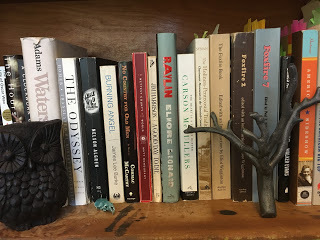

Published on February 24, 2017 13:19
February 16, 2017
Wilmington Star-News
So many thanks to Ben Steelman at Wilmington's Star-News for this review of Lightwood.
"Post's Florida is rather farther north than the world of Carl Hiaasen's fiction, but they share the dark comedy, intricate plotting and strong sense of paltry sin and mordant evil. Readers who like Hiaasen should find "Lightwood" well to their taste."

"Post's Florida is rather farther north than the world of Carl Hiaasen's fiction, but they share the dark comedy, intricate plotting and strong sense of paltry sin and mordant evil. Readers who like Hiaasen should find "Lightwood" well to their taste."

Published on February 16, 2017 07:14
S. W. Lauden Interrogation
So this was fun: my first "interrogation" by fellow crime writer S.W. Lauden. Read on as I get very candid about how the process of writing is akin to be attacked by snakes and leeches and what exactly we Floridians want you to know about our state.... (in other words, this interview doesn't pull any punches.)
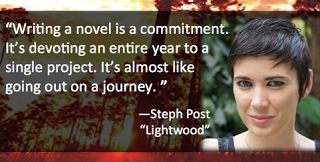

Published on February 16, 2017 06:56
February 15, 2017
The Seahawk
This was a wonderful surprise! Maddie Driggers attended my writing with Taylor Brown at Old Books on Front Street and wrote about the experience for UNCW's The Seahawk. Many thanks!


Published on February 15, 2017 11:46



